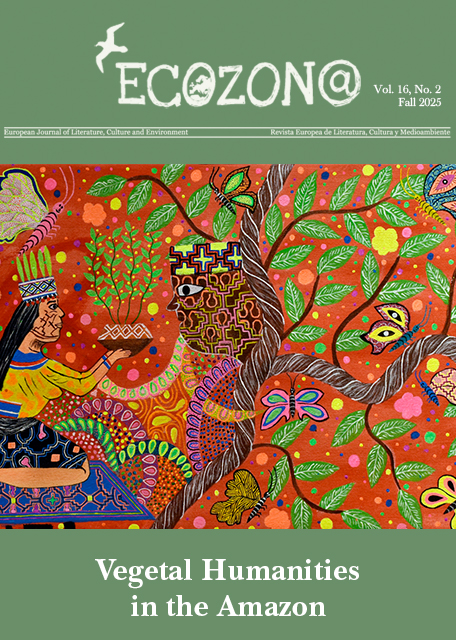The Dog-Fabulist: Glimpses of the Posthuman in A Dog’s Heart (1925) by Mikhail Bulgakov
DOI:
https://doi.org/10.37536/ECOZONA.2019.10.2.2890Schlagworte:
Russian, literature, animal studies, Bulgakov, posthumanAbstract
Mikhail Bulgakov’s science-fiction novella A Dog’s Heart (??????? ??????, 1925) is a brilliantly wry account of an experiment to graft human organs onto the body of a stray mutt, with unexpected consequences. The dog turns into a despicable, unruly hominid that wreaks havoc in Professor Preobrazhensky’s already endangered bourgeois existence. Critics have seen the story mostly as a prophecy predicting the downfall of the homo sovieticus: the uncontaminated, witty voice of the dog-narrator does not spare either the aristocratic opportunists of the new regime, or the violent, unruly proletarians. However, from an animal studies perspective, Bulgakov’s story, along with examples from Mikhail Zoschchenko’s and William Golding’s anti-utopian fiction, may also be investigated as an exhortation to discover new narratives of “intra-action” (Barad) among all sorts of living agencies, and as an enactment of what Joseph Meeker calls the “play ethic,” where more-than-human and human beings participate on equal terms in the game of survival and co-evolution. Through a comparative analysis of the three main characters, Sharik, Sharikov and Preobrazhensky, this article shows how Bulgakov’s story is not only a fable about human fallibility and political conflicts, but also opens a window onto a posthuman alternative.
Downloads
Downloads
Veröffentlicht
Ausgabe
Rubrik
Lizenz
Authors who publish with this journal agree to the following terms:
a) Authors retain copyright and grant the journal right of first publication with the work simultaneously licensed under a Creative Commons Attribution License that allows others to share the work with an acknowledgement of the work's authorship and initial publication in this journal (CC BY-NC for articles and CC BY-NC-ND for creative work, unless author requests otherwise.
b) Authors are able to enter into separate, additional contractual arrangements for the non-exclusive distribution of the journal's published version of the work (e.g., post it to an institutional repository or publish it in a book), with an acknowledgement of its initial publication in this journal.
c) Authors are permitted and encouraged to post their work online (e.g., in institutional repositories or on their website) prior to and during the submission process, as it can lead to productive exchanges, as well as earlier and greater citation of published work (See The Effect of Open Access).










